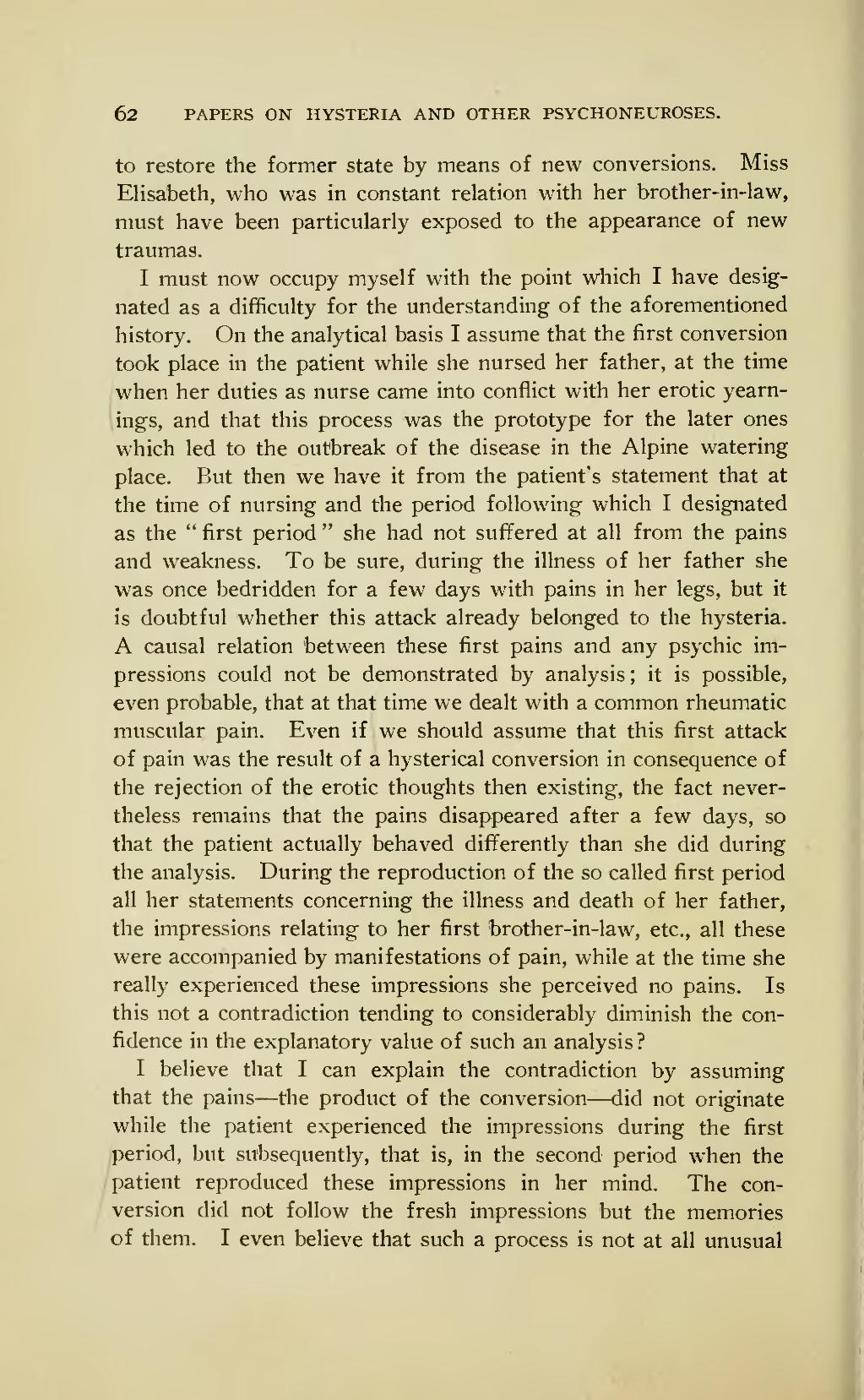to restore the former state by means of new conversions. Miss Elisabeth, who was in constant relation with her brother-in-law, must have been particularly exposed to the appearance of new traumas.
I must now occupy myself with the point which I have designated as a difficulty for the understanding of the aforementioned history. On the analytical basis I assume that the first conversion took place in the patient while she nursed her father, at the time; when her duties as nurse came into conflict with her erotic yearnings, and that this process was the prototype for the later ones which led to the outbreak of the disease in the Alpine watering place. But then we have it from the patient's statement that at the time of nursing and the period following which I designated as the "first period" she had not suffered at all from the pains and weakness. To be sure, during the illness of her father she was once bedridden for a few days with pains in her legs, but it is doubtful whether this attack already belonged to the hysteria. A causal relation between these first pains and any psychic impressions could not be demonstrated by analysis; it is possible, even probable, that at that time we dealt with a common rheumatic muscular pain. Even if we should assume that this first attack of pain was the result of a hysterical conversion in consequence of the rejection of the erotic thoughts then existing, the fact nevertheless remains that the pains disappeared after a few days, so that the patient actually behaved differently than she did during the analysis. During the reproduction of the so called first period all her statements concerning the illness and death of her father, the impressions relating to her first 'brother-in-law, etc., all these were accompanied by manifestations of pain, while at the time she really experienced these impressions she perceived no pains. Is this not a contradiction tending to considerably diminish the confidence in the explanatory value of such an analysis?
I believe that I can explain the contradiction by assuming that the pains—the product of the conversion—did not originate while the patient experienced the impressions during the first period, but subsequently, that is, in the second period when the patient reproduced these impressions in her mind. The conversion did not follow the fresh impressions but the memories of them. I even believe that such a process is not at all unusual
